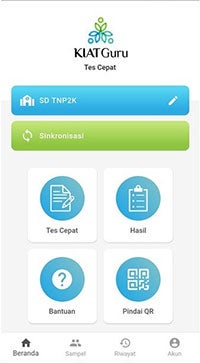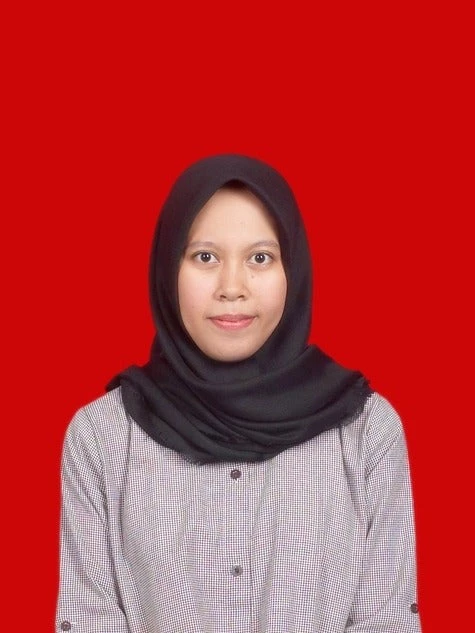 Siswa SD bersama perwakilan masyarakat menggunakan Aplikasi Tes Cepat di Ketapang, Kalimantan Barat. Kredit Foto: Abdurrahman
Siswa SD bersama perwakilan masyarakat menggunakan Aplikasi Tes Cepat di Ketapang, Kalimantan Barat. Kredit Foto: Abdurrahman
The pandemic has deepened the learning loss in many low- and middle-income countries and widened the education inequity gap due to differential access to technology. More than ever, education experts have underscored the importance of assessing learning more frequently, so teachers adjust lessons according to student skill level. The use of education technologies has now become vital for teaching and learning processes.
At the core of this situation lies the question of how technologies can empower schools and parents in remote areas to access learning outcomes in a form that is accessible and useful for them. What are the key considerations, challenges, and solutions that should be taken into account? We share key lessons learned from the development, implementation, and scale-up of a technology solution.
Some low- and middle-income countries like India, Uganda, and Malawi have utilized citizen-led learning assessment, dissemination of learning outcomes, and community-based monitoring to improve their education quality. In Indonesia, through the KIAT Guru pilot, the World Bank provided technical assistance to the government to experiment with a similar approach combined with teacher performance-based pay to improve education service delivery in poor rural and remote areas.
 In KIAT Guru, communities can monitor and assess the learning outcomes through Tes Cepat, a quick diagnostic test for foundational literacy and numeracy . Initially, Tes Cepat was done manually using paper and pencil assessment and implemented in 203 remote primary schools in five districts. After the government expanded the program to 410 schools in five districts, a mobile app version of Tes Cepat was developed to support local citizens’ participation in administering, managing, and interpreting the assessments’ results.
In KIAT Guru, communities can monitor and assess the learning outcomes through Tes Cepat, a quick diagnostic test for foundational literacy and numeracy . Initially, Tes Cepat was done manually using paper and pencil assessment and implemented in 203 remote primary schools in five districts. After the government expanded the program to 410 schools in five districts, a mobile app version of Tes Cepat was developed to support local citizens’ participation in administering, managing, and interpreting the assessments’ results.
Representatives from schools, district governments, and the central government were involved in designing the Tes Cepat, as they were the ones who would use it. The development of the mobile app version utilized a human-centered approach to ensure that all the users can collect the data and utilize the test results.
The application’s key feature is the QR code, which can work offline in scanning the test results via mobile phones, then process them into grade- and school-level outcomes. This feature is crucial for people in remote areas, where only around 30 percent of villages have internet connectivity.
When the app’s training was rolled out in the field, a new challenge emerged: human resource capacity. The training required literate community volunteers who could operate a smartphone. Unfortunately, only a handful of people in poor and remote villages met these criteria. In certain villages, there was only one smartphone available in the whole village – which was the one provided by the project. In villages such as this, if community volunteers were willing to join the training, they could become administrators.
Before the COVID-19 pandemic, we had the opportunity to participate in such training at a village in Manggarai, East Nusa Tenggara. Riana, the village’s KIAT Guru community facilitator, led the participants through a step-by-step introduction of the application described in the digital Tes Cepat administration guide.
One of her trainees, a student’s mother, held the smartphone for the first time ever. Her fingers were visibly shaking, and her voice quivering, as she read the instructions on the phone. But by the end of the training, she became more confident in using the phone. We also overheard excited remarks when the assessment results were presented back to the trainees through a visual along with their summary on the phone. Although the training took three to four hours, the learning method applied made it an enjoyable experience for the participants.
Different challenges often demand different solutions, especially for the most disadvantaged communities with limited use of technology. Because the Tes Cepat requires intensive training, during the pandemic, the KIAT Guru team also prepared an alternative tool with a set of 10 questions to be administered manually. Then with a simple Microsoft Excel application, teachers can quickly map the results and group students according to their abilities. These off-the-shelf assessments helped 350 teachers to assess more than 33,000 students without necessitating them to undergo any training.
When the pandemic hit Indonesia in mid-March 2020, the Ministry of Education and Culture (MoEC) realized the importance of encouraging teachers to teach at the right level, rather than insisting upon completing the curriculum targets. Building upon the lessons learned from Tes Cepat, MoEC developed AKM Kelas, an Android-based application that helps teachers nationwide to administer and identify their students where they are along with the basic literacy and numeracy continuum.
At the end of the day, measuring learning, or other development outcomes for that matter should always be accompanied by the intent to share the data back with those who need them the most.
Related:
- Tes Cepat background paper, administration manuals, and paper-and-pencil and digital versions
- Empowering frontlines, leveraging technology: Basic service delivery in 21st century Indonesia




Join the Conversation